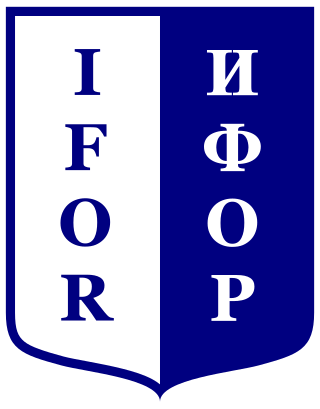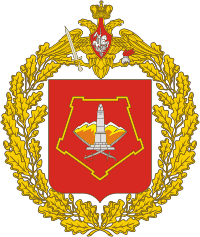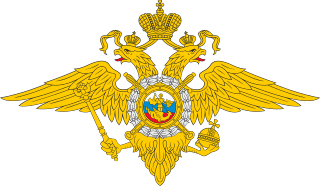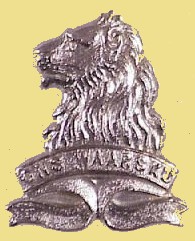
The Kenya Defence Forces (KDF) are the armed forces of the Republic of Kenya. They are made up of the Kenya Army, Kenya Navy, and Kenya Air Force. The current KDF was established, and its composition stipulated, in Article 241 of the 2010 Constitution of Kenya; it is governed by the KDF Act of 2012. Its main mission is the defence and protection of the sovereignty and territorial integrity of Kenya, recruitment to the KDF is done on yearly basis. The President of Kenya is the commander-in-chief of the KDF, and the Chief of Defence Forces is the highest-ranking military officer, and the principal military adviser to the President of Kenya.

The Namibian Defence Force (NDF) comprises the national military forces of Namibia. It was created when the country, then known as South West Africa, gained independence from apartheid South Africa in 1990. Chapter 15 of the Constitution of Namibia establishes the NDF and defines its role and purpose as, " ... to defend the territory and national interests of Namibia".

The Implementation Force (IFOR) was a NATO-led multinational peace enforcement force in Bosnia and Herzegovina under a one-year mandate from 20 December 1995 to 20 December 1996 under the codename Operation Joint Endeavour.

The Croatian Army is the land force branch of the Croatian Armed Forces. It is numerically the largest of the three branches of the Croatian Armed Forces. The HKoV is the main force for the defense of the country against external threats, and in addition to the task of defending the Republic of Croatia, the HKoV also has the task of participating in peace support operations and humanitarian operations as part of international forces, as well as the task of preventing and eliminating the consequences of emergency situations in the country caused by natural and technical accidents and disasters.

The South African Defence Force (SADF) comprised the armed forces of South Africa from 1957 until 1994. Shortly before the state reconstituted itself as a republic in 1961, the former Union Defence Force was officially succeeded by the SADF, which was established by the Defence Act of 1957. The SADF, in turn, was superseded by the South African National Defence Force in 1994.

The South West Africa Territorial Force (SWATF) was an auxiliary arm of the South African Defence Force (SADF) and comprised the armed forces of South West Africa from 1977 to 1989. It emerged as a product of South Africa's political control of the territory which was granted to the former as a League of Nations mandate following World War I.

The Islamic Revolutionary Guard Corps Ground Forces, acronymed NEZSA, are the ground forces of the Islamic Revolutionary Guard Corps (IRGC). The IRGC Ground Forces are more geared towards internal disorder than the regular Iranian Army. However, in recent years, the IRGC Ground Forces and by extension the entire IRGC, have transitioned to becoming an expeditionary force, capable of projecting power abroad, through conventional military operations or via proxies and unconventional warfare. There are at least around 150,000 IRGC Ground Force troops.

The Security Forces Command is the military and security force of the unrecognized Turkish Republic of Northern Cyprus.

The Volga–Ural Military District was a military district of the Russian Ground Forces, formed on 1 September 2001 by the amalgamation of the Volga Military District and the Ural Military District. The headquarters of the Ural Military District, located at Yekaterinburg became the new headquarters of the merged district. In 2010 the District was merged with part of the Siberian Military District to form the new Central Military District.

New Zealand's involvement in the Vietnam War was controversial, sparking widespread protest at home from anti-Vietnam War movements modelled on their American counterparts. This conflict was also the first in which New Zealand did not fight alongside the United Kingdom, instead following the loyalties of the ANZUS Treaty.

The Internal Troops of the Ministry for Internal Affairs of the Russian Federation was a paramilitary force of the Ministry of Internal Affairs of Russia from 1991 to 2016.

The Halifax Rifles (RCAC) is a Canadian Army regiment that served between the years of 1860 and 1965 before being reduced to nil strength and placed on the Supplementary Order of Battle. The regiment was reactivated on May 10, 2009, as a reserve force unit performing the role of armoured reconnaissance. It is the first and only regiment since the 1960s to be reactivated from the Supplementary Order of Battle.

The General de la Rey Regiment is a reserve infantry regiment of the South African Army.

The Namibian Army is the ground warfare branch of the Namibian Defence Force.
Otokar URAL is a 4x4 armoured vehicle designed for police, law enforcement and paramilitary forces.

Enhanced Forward Presence (EFP) is a NATO-allied forward-deployed defense and deterrence military force in Northern, Central and Eastern Europe. This posture in Northern Europe through Estonia, Latvia, and Lithuania and in Central Europe through Poland, Slovakia and Hungary and in Eastern Europe through Romania and Bulgaria, is in place to protect and reassure the security of NATO's Northern, Central and Eastern European member states on NATO's eastern flank.

Regiment Uitenhage was an infantry regiment of the South African Army.
The 57th Red Banner Ural-Khingan Rifle Division was an infantry division of the Red Army and the Soviet Army.

















